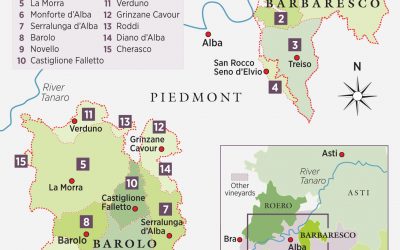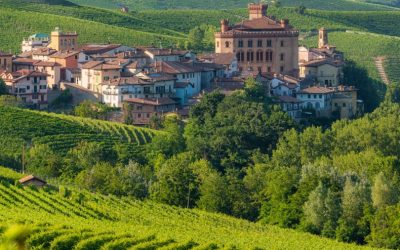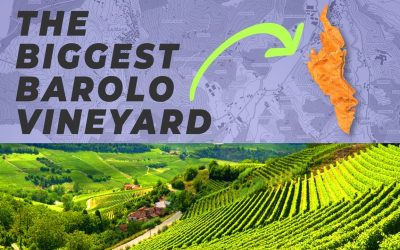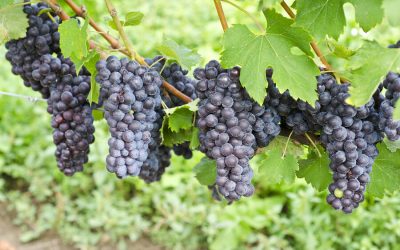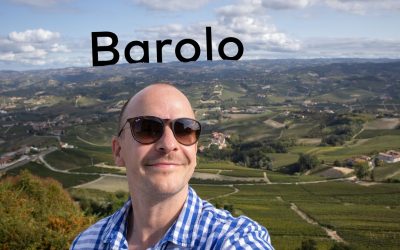Why is Barolo so Special?
Barolo, often referred to as the “king of wines and the wine of kings,” has long held a revered position in the world of viticulture. Its stature is not merely a result of effective branding or mere historical prominence; it’s an accolade earned through the intricate ballet of nature, tradition, and artistry that occurs in the picturesque landscapes of Piedmont, Italy.
The essence of Barolo’s singularity lies in the Nebbiolo grape, a varietal that is as finicky as it is rewarding. While the grape can be grown in various parts of the world, it is in the Langhe hills of Piedmont that it finds its most profound expression. Here, the combination of soil, altitude, and microclimate creates a perfect cradle for Nebbiolo, allowing it to produce wines of unparalleled complexity and depth.
This, combined with centuries-old winemaking traditions and the passion of Barolo’s producers, has led to a wine that is rich in history, layers of flavors, and a potential for aging that few other wines can rival. Every bottle of Barolo captures a moment in time, a piece of its terroir, and a testament to the dedication of its maker – and that’s what makes it truly special.
Why is Barolo so Special?

🍷 Known as the “King of Wines“, Barolo boasts an unparalleled legacy that is steeped in tradition. Originating from the mist-covered hills of Langhe in Piedmont, Barolo is exclusively crafted from the Nebbiolo grape. This distinctiveness largely arises from Barolo’s limestone-rich soil, endowing the wine with an unmatched structure, marking its place as one of the world’s most revered wines.
🍷 Beyond its geographical and geological attributes, the production of Barolo adheres to stringent regulations ensuring its exceptional quality. Every bottle of Barolo undergoes a maturation process of at least 38 months, with a minimum of 18 spent in wooden barrels. This prolonged aging amplifies the wine’s facets and depth, creating an aromatic bouquet ranging from dried flowers like roses and violets to desiccated red fruits, licorice, tar, and earth.
🍷 Beyond the sensory pleasure it offers, Barolo embodies an essence of timeless elegance. Its reverence isn’t merely confined to its taste but extends to the intricate ballet of elements – from the climate to the craftspeople – that converge harmoniously to produce this liquid masterpiece. This global recognition is not just a nod to its impeccable quality but a testament to the tales, traditions, and passion poured into every bottle.
What are the best wines from Barolo?
Known as the king of wines, Barolo wines hail from the picturesque region of Piedmont, Italy. These wines are celebrated for their full-bodied, tannic, and age-worthy traits. Each Barolo bottle encapsulates the tale of its vineyard origin and the meticulous touch of the winemaker behind it.
For instance, the Barolo ‘Bussia’ 2019 by Rinaldi is priced between $277.00 to $986.00. It captivates the senses with aromatic layers of wild raspberry, red plums, coffee powder, dark chocolate, and candied orange peel. This wine epitomizes Barolo’s iconic tannin texture that matures gracefully over years.
Similarly, the Barolo ‘Bussia’ 2019 by Giacomo Fenocchio comes with a price tag ranging from $648.35 to $743.00. Its aromatic profile reveals ripe red fruits, sweet spices, coupled with floral and earthy hints. On tasting, the wine reveals full-bodied richness, potent tannins, and a lingering finish, underscoring Piedmont’s winemaking excellence.
What Makes Barolo Unique?
The uniqueness of Barolo wine stems from its careful production from Nebbiolo grapes, adherence to stringent DOCG regulations, and remarkable aging potential. Its distinct flavors of cherries, truffles, and roses, coupled with a high tannin content, allow it to mature gracefully over decades. Produced in the Langhe region of Piedmont, Barolo’s terroir imparts a balance of power and elegance, making it a symbol of Italian excellence and a prized choice among wine connoisseurs. The unique attributes of Barolo stem from the Nebbiolo grapes, a variety that’s notoriously challenging to grow. The distinct flavor profile encompasses notes of cherries, truffles, and roses, and the wine is famous for its high tannin content.
1. The Notable Crus of Barolo:
Barolo is not just a wine; it’s a mosaic of unique terroirs, each contributing distinct characteristics to the wine. The most renowned of these terroirs are the “crus” – specific vineyard sites recognized for their superior quality and distinct microclimates. These crus, such as Cannubi, Rocche di Castiglione, and Brunate, have been producing wines that are the epitome of Barolo for centuries. They impart a unique complexity to the wine that showcases the perfect synergy between the Nebbiolo grape and the land it’s grown on.
2. The Masters: Giovanni Rosso and Conterno:
Two of the luminaries in the world of Barolo are Giovanni Rosso and Conterno. Both winemakers have been instrumental in enhancing Barolo’s global reputation. Giovanni Rosso, from the Serralunga d’Alba village, champions the art of crafting wines that beautifully express the essence of each cru. His wines are a testament to the power and elegance that the Nebbiolo grape can attain. On the other hand, Conterno, particularly the Roberto Conterno’s Cascina Francia, represents the pinnacle of tradition combined with innovation. Their meticulous winemaking process, which respects both ancient techniques and modern understanding, creates wines of exceptional depth and longevity.
3. The Five Original and Eleven Expanded Villages:
Initially, Barolo wine was produced in five core villages: Barolo, Castiglione Falletto, La Morra, Monforte d’Alba, and Serralunga d’Alba. Each village imparts its unique terroir signature to the wine, from the powerful structures of Serralunga d’Alba to the fragrant elegance of La Morra. However, with time and the expansion of the Barolo denomination, six additional villages were included. These are Diano d’Alba, Grinzane Cavour, Novello, Roddi, Verduno, and a part of Cherasco. This expansion enriched the Barolo portfolio, adding new layers of complexity and nuance to an already fascinating wine.
The universe of Barolo is vast and intricate, and its appreciation lies in understanding the interplay between its history, terroir, and the passionate winemakers who bring it to life.
Barolo Production Process
Producing Barolo follows the rigorous DOCG (Denominazione di Origine Controllata e Garantita) regulations. Aging for a minimum of 38 months with at least 18 months in wooden barrels, the wine undergoes a process that adds to its complexity and charm.
Barolo’s Winemaking Regions
Barolo wine is crafted across various communes in the Barolo Zone, each contributing a unique terroir that shapes the wine’s flavor and texture. The harmony between soil, climate, and topography plays a vital role in Barolo’s identity.
Wine Tours and Tastings in Barolo
Visitors to Barolo can indulge in wine tours and tastings at numerous wineries. From large, renowned estates to small family-run vineyards, the experience can be both personalized and immersive. Guided tours offer curated insights, while individual appointments allow more flexibility.
- La Morra and Barolo: These are the two most renowned communes. The wines from La Morra are known for their elegance and aromatic finesse, with softer tannins, making them more approachable in their youth. In contrast, Barolo wines, from the commune that lends the entire region its name, are robust, full-bodied, and possess a structure that allows them to age gracefully for decades.
- Castiglione Falletto: Situated at the heart of the Barolo region, wines from this area strike a balance between the elegance of La Morra and the power of Serralunga. They are known for their depth and complex aromatic profiles, often with floral and spicy notes.
- Serralunga d’Alba, Monforte d’Alba, and Bussia in Monforte: These areas produce some of the most structured and long-lived Barolo wines. Their soils, rich in clay and limestone, lend the wines a pronounced mineral character with firmer tannins.
- The lesser-known communes: Beyond the ‘Big Five’, there are several other communes such as Verduno, Novello, Grinzane Cavour, Diano d’Alba, Cherasco, and Roddi. Each of these areas, though smaller in production, contributes to the diverse tapestry of Barolo, offering wines with unique characteristics. For instance, Verduno wines are known for their lightness and delicate aromas, making them stand apart from their more muscular counterparts.
Barolo in Global Markets
The rarity and meticulous craftsmanship of Barolo contribute to its demand in global markets. Limited annual production further drives up the price, making it a sought-after commodity among wine connoisseurs.
Pairing Barolo with Food
Barolo pairs wonderfully with a variety of foods, particularly meat dishes and hearty Italian cuisine. Sommeliers often recommend classic pairings to accentuate the wine’s flavors, and the high tannins make it a versatile companion at the dining table.
Conclusion
Barolo’s allure lies in its richness, complexity, and heritage. From the grapes to the bottle, every step reflects a commitment to excellence. Visiting the Barolo region offers a glimpse into this fascinating world, where tradition meets innovation.
Related Articles and Links:
- Exploring the Wines of Langhe: A comprehensive guide to Langhe’s rich wine heritage.
- The Vineyards of Roero and Monferrato: Discovering the hidden gems of Piedmont’s wine regions.
- Wine Festivals and Events in Piedmont: A calendar of must-attend wine events for enthusiasts.
By encompassing every aspect of Barolo, from its production to its global presence, this article provides a thorough understanding of what makes this wine so special. Whether a novice wine lover or a seasoned expert, readers will find valuable insights and inspiration for exploring Barolo further.

